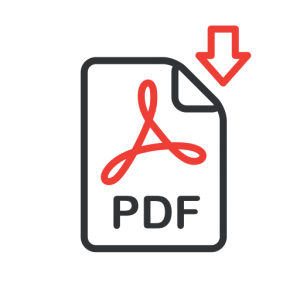The world as we know it is changing.
Countries are instituting stringent lockdowns and travel regulations to prevent the COVID-19 pandemic from spreading faster and farther than it already has.
The pandemic is akin to an experiment in deglobalization as trade and migration flows are stifled, supply chains are snarled, and international trade is reduced.
Businesses are being forced to modify the way they operate under these conditions. A lot of these businesses are adopting telecommuting.
What is telecommuting?

Also known as working remotely or working from home, telecommuting is a work arrangement that allows an employee work outside the office. It is based on the concept that work does not need to be done in a specific place to be executed successfully. In those arrangements, remote employees’ “travel” to the office via telecommunication links and maintain contact with coworkers and employers using collaborative tools. Telecommuting has great potential for business.
Some of the benefits of telecommuting include:
- Improved productivity from higher task concentration compared to in-office employees.
- Cost savings from reduced overheads.
- Happier and more engaged employees due to reduced travel time leading to shorter breaks, fewer sick days and less time off.
- Telecommuters can design their days to allow their professional and personal lives to coexist peacefully.
- Better health and wellness: In a study on telecommuting, the Royal
Society for Public Health found that 55% of participants felt more stressed as a result of their commute.
Happier, healthier employees produce better work and feel more committed to their companies.

4.7 Million No. of US employees who work from home at least half the week (Global Workplace Analytics)
600 Annual greenhouse gas emissions that could be prevented from entering the atmosphere from 10 Million million cars in the US alone (Owl Labs)
The growth rate of telecommuting jobs over the past decade (State of Telecommuting) 115%
22% The growth of telecommuting jobs between 2017 & 2018 (Flex Jobs)
The difference in employee turnover between businesses that allow telecommuting and those that don’t 25%
Technology has enabled several industries to see that it has never been necessary to have all the people in the same place at the same time. Portable devices are gradually becoming the workplace.

Sales team(s) within a company’s network have always operated remotely. However, recent technology has enhanced the speed with which they interact with their firms.

Journalists can now broadcast from remote, unmanned studios without ever meeting members of the production team

Virtual universities are growing with students and faculty interacting via e-mail, videoconferencing and mobile communication devices.

Doctors can consult patients by using video- conferencing tools in the healthcare space.
There are also emerging surgical systems that allow surgeons utilize robotic and wireless technology to carry out procedures on patients, even those who are distantly located from them.

Despite the growth in remote, collaborative technology, there are significant managerial, technical, psychological and social issues that require a turnaround in organizational thinking.
Done right, telecommuting can boost productivity. Done badly, it can lead to inefficiencies, conflicts and demotivation.

Telecommuting involves much more than efficient connection. Technology has changed how organizations operate. When employees work at the office, technical support staff are available to help with any difficulties. However, technical support is very limited with telecommuting. Oftentimes, the challenges could be caused by a third party like the Internet Service Provider or the platform on which your team collaborates. In addition, there are significant issues that need to be resolved, cost-benefit and integration decisions that need to be made, to enable that potential to be derived especially in less developed environments. These include:
- How do we determine the most effective system to support our vision?
- How do we ensure regulatory compliance on the part of our remote workforce?
- How will information be stored, organized and shared?
- How much confidential data can reside on remote devices?
- How will these devices be protected against compromise?
- How can we protect against the loss of remote company assets?
It is difficult to ignore someone standing in the doorway or leaning at your desk.
Managers typically enforce control by adopting a face-to-face, management by walking around approach at the employee’s expense. However, in a virtual environment, control reverts to the employee. The ability to tune out “distractions” can be one of the most effective productivity techniques of all. The application of interpersonal skills needed to be successful (communication, teamwork, leadership) in a virtual environment raises some key questions:
- How do you manage people whom you do not see?
- How do you ensure that the team are disciplined enough not to allow these benefits to diminish?
- How do we ensure that the team is working towards a shared vision?
- How do we ensure that the team adopts the right communication technology?
- How do we build the most resilient team?
- How do we develop systems that ensure that the team delivers on its engagement?
- How do we effectively reward the performance of team members?
- How do we establish our resource needs of the future?
Loneliness, feelings of isolation, productivity impacting distractions and a lack of self-organization have been identified as common amongst telecommuters. Key questions that should be addressed to build a strong company culture and maintain high productivity in a remote workforce include:
- How can we ensure that our employees feel part of the team?
- What programs will we develop to enable occasional social interaction and cohesion among employees, telecommuters included?
- How can we enable our employees, especially telecommuters to develop the schedule and skills necessary to work from home effectively?
- How do we ensure professional growth of our remote employees?
How can Execution Edge help?
There is a coming paradigm shift in what is deemed an appropriate workplace. Every paradigm shift brings new investment opportunities. Companies will have to develop new strategies, adopt new cultures and flatter structures. Employees will have to take up more responsibility and supervisors will have to adapt to new ways of managing projects. To exploit these emerging opportunities, businesses will need support in:
- revalidating their business strategy
- assessing risks and developing mitigation strategies
- articulating IT governance and cyber security strategies.
- building a culture that supports remote work
- developing an appropriate operating model
- developing a comprehensive HR policy manual
- assessing the resource gaps required for this new work environment
Contact Us
Execution Edge
First Floor, Katia Gardens, 1676, Oladele Olashore Street, Victoria Island – Lagos- Nigeria
Phone: 234-1- 277-6131-7 Fax : 234-1- 277-6131-7
Email: info@executionedge.net
nnaemeka.okereke@executionedge.net
We make strategy work for our clients!



